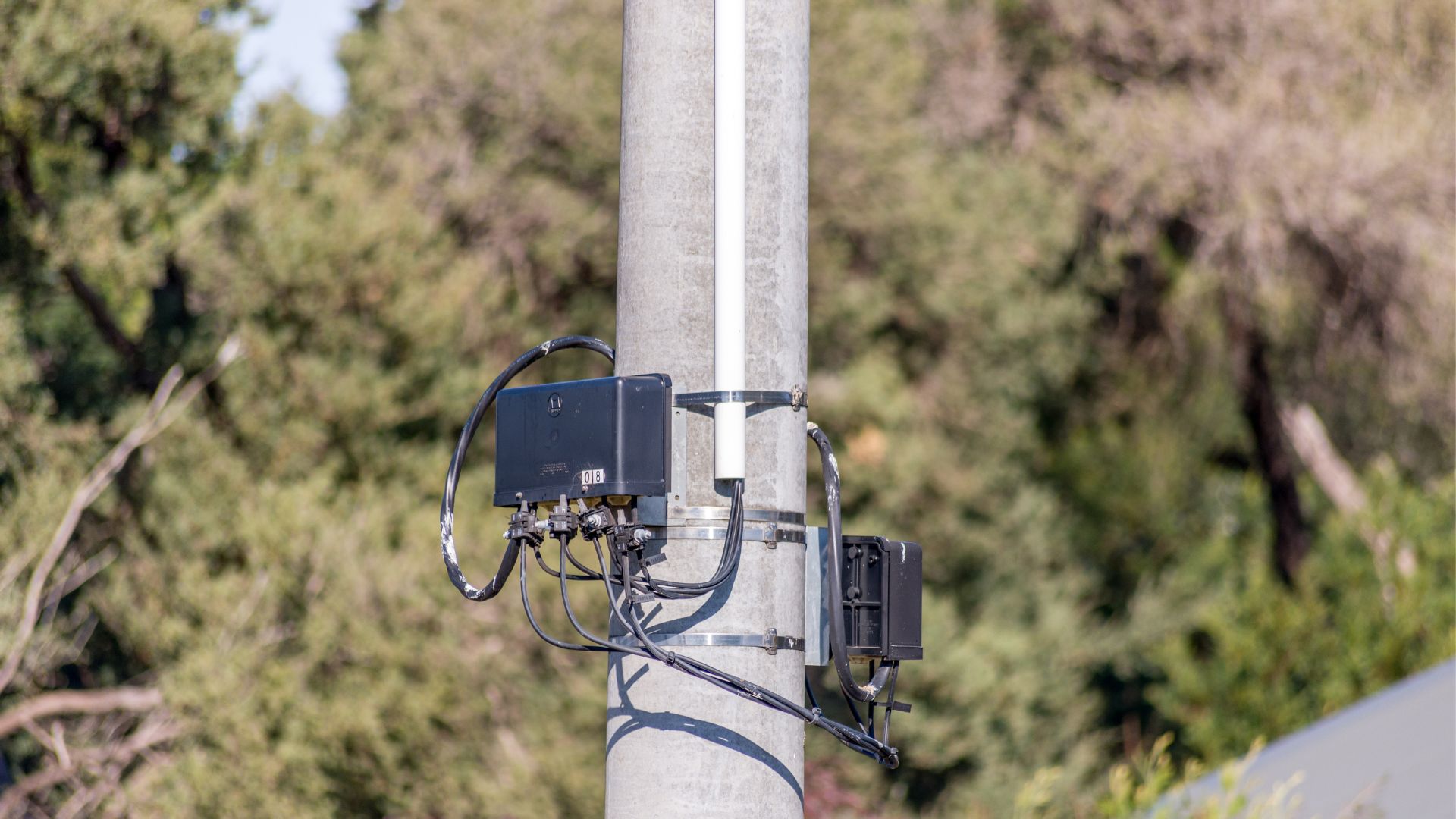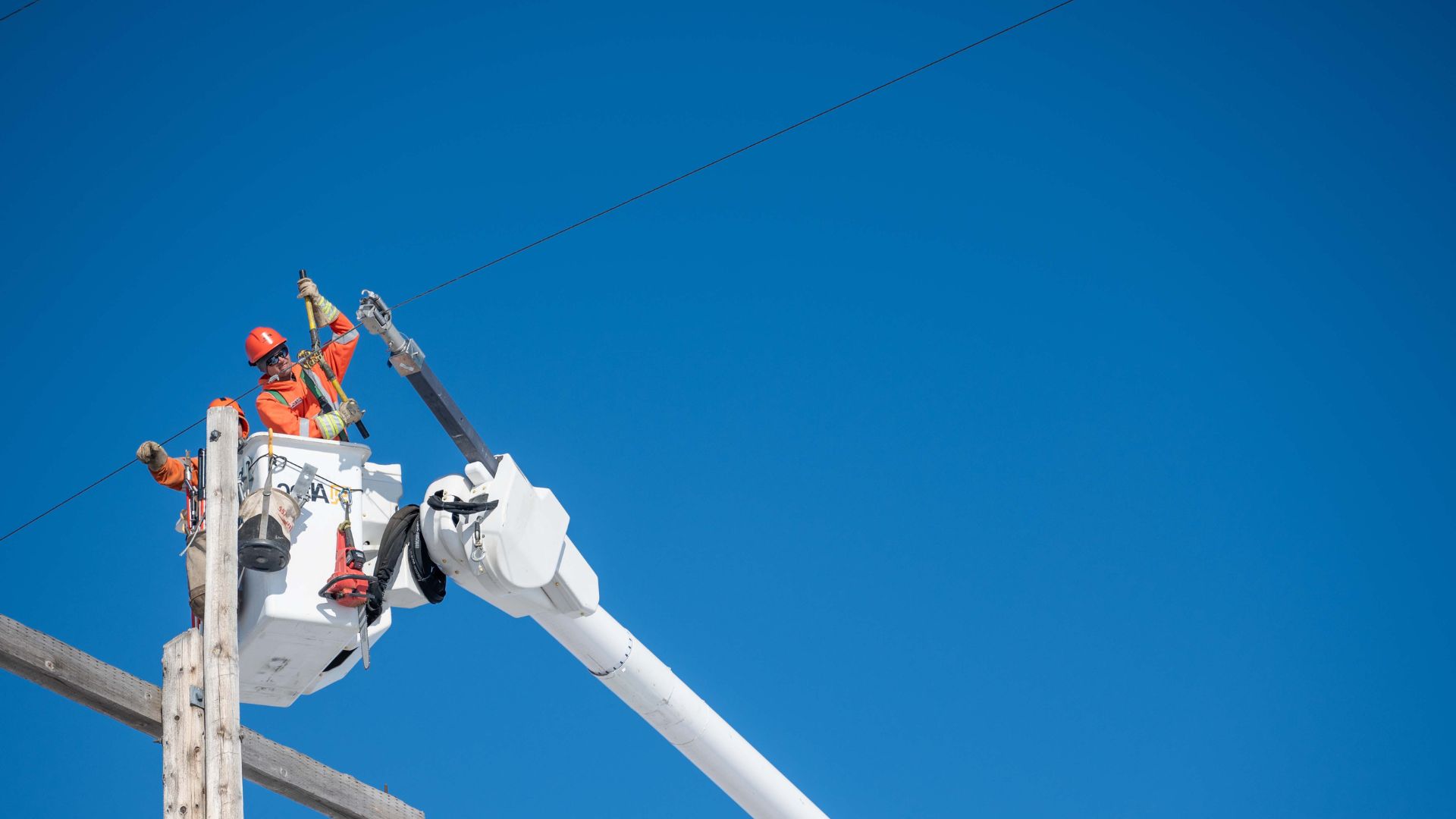A survey revealed that over 35% of private power poles failed safety inspections due to neglect or poor upkeep. Many of these issues, like leaning poles, rust, or vegetation interference, were visible from the ground and could have been addressed early.
At Enersol, our Residential Electrician Gold Coast - Knowing how to keep their property safe without overstepping legal boundaries is crucial for property owners. This guide outlines what you can and can’t do when conducting DIY property pole inspections so you understand which checks are safe to carry out yourself and which must be left to licensed professionals.
If you’re managing a home with a private pole, staying informed can help prevent costly mistakes, avoid legal trouble, and maintain your electrical safety.
What is a Private Power Pole?
A private power pole is an electricity pole located on private property that supports overhead wires delivering power from the main network to a home, shed or other structure. Its role is to bridge the gap between the street’s electricity infrastructure and the property’s meter box, especially when a direct connection isn’t feasible.

Who Owns It?
Unlike standard power poles installed by energy distributors, private poles are owned and maintained by the property owner. This includes responsibility for inspections, repairs and ensuring safety compliance at all times.
Where Are They Used?
Private poles are most often installed on:
- Rural properties with long driveways
- New builds on unconnected land
- Blocks where underground cabling is impractical
Why It Matters for Property Owners
Once installed, the property pole becomes a permanent part of the site’s electrical system. Any work on it must be carried out by a licensed electrical contractor, and failure to maintain it can lead to service interruptions or hazards.
Understanding property owners’ obligations regarding private power poles is essential for keeping the electricity supply safe and compliant.
Why Private Power Poles Pose a Risk If Ignored
Neglecting a private pole can lead to more than just inconvenience. It can seriously risk your property, safety, and finances.
1. Common Causes of Failure
Many power poles on private property weaken over time due to weather exposure, rot, rust, and termite damage. Poles made from timber are especially vulnerable. These issues can turn a minor defect into an immediate safety risk if ignored.
2. Serious Safety Hazards
A failing private pole can lead to fallen overhead wires, exposing live lines on the ground. This creates a severe safety risk for anyone nearby and may even spark a bushfire risk in dry conditions. Unstable poles also risk collapse, especially in storms or high winds.
3. Legal and Financial Impacts
Under Queensland law, property owners are responsible for keeping their own network safe and compliant. If your pole causes an outage or injury, you could face fines, be liable for damage, or even have your power cut. Energy providers may also need to enter private property to disconnect a dangerous connection point.
DIY Property Pole Inspections – What You Can and Can’t Do
Some visual checks can help property owners stay aware of their private pole’s condition without crossing legal boundaries. Knowing what’s safe and what’s not is the key to keeping your power supply reliable and your property safe.
What You Can Do as a Property Owner
These tasks can be done from the ground and don’t require tools or contact with electrical equipment:
- Walk around the base of your private pole to check for leaning or soil movement
- Look for surface cracks, rust, or termite damage on the pole and cross arms
- Inspect any attached lights or signs to make sure they’re secure
- Use binoculars or a phone camera to view the connection point and pole top
- Look at overhead wires to check for sagging or exposed conductors
- Make sure branches don’t touch lines, and safely trim trees that are well clear of wires
- Check for loose fittings or hardware, without physically touching anything
Safety Notes
- Never touch or try to stabilise the pole
- Do not use ladders or stand beneath loose or unstable parts
- Keep your distance from wires and electrical fixtures at all times
- If there’s any sign of damage or an immediate safety risk, contact a licensed electrical contractor
Property managers must follow the same rules and arrange professional help for electrical repairs. Only licensed professionals can enter private property to work on power poles or live equipment due to the risk of electric shock and broader safety risk.
What You Can’t Do Without a Licence
Many tasks involving private power infrastructure go beyond what is safe or legal for property owners to handle. These jobs involve live systems or structural risks and must be completed by a qualified professional.

Tasks That Must Be Handled by Licensed Professionals
The following types of electrical work are restricted and should never be attempted by anyone without the right licence:
- Adjusting or reconnecting overhead wires at the connection point
- Replacing damaged insulators, brackets or corroded bolts on power poles
- Installing, removing or modifying electrical equipment
- Digging around the base of a pole, which can affect stability
- Moving or replacing the pole, even if it appears loose at ground level
- Testing or reinforcing the structural strength of a pole exposed to age or weather
These tasks are considered extremely dangerous due to the presence of overhead powerlines, live currents, and risk of collapse. Even a slight disturbance can lead to power interruptions, fire or electric shock.
Legal Boundaries
- Only licensed electricians are authorised to work near electrical infrastructure
- Performing unauthorised work could void insurance, breach energy network rules and result in fines
- Energy crews may refuse access through locked gates if safety rules are not followed
- Attempting to remove tree branches near powerlines without professional help breaches compliance
To keep your property safe, always regularly inspect from a safe distance and call a licensed professional when in doubt. The estimated cost of prevention is far less than the cost of a serious incident.
Tree Trimming Near Power Poles – Know Your Limits
Keeping vegetation away from private power poles and overhead wires is essential for ensuring safety and reliability on your property. Unmanaged growth can damage equipment, obstruct access to the connection point, or pose serious fire risks.
What You Can Safely Do:
- Trim trees only if branches are well outside the electricity exclusion zone
- Inspect your property regularly to check for growth near the pole or wires
- Use binoculars or ground-level tools—never climb or use ladders near overhead wires
When to Call a Professional:
- Branches are within the exclusion zone or near the connection
- Growth is affecting or near your meter or attached equipment
- Unsure about the safe distance or type of vegetation involved
Important Reminders:
- Engage a qualified arborist or licensed linesman for anything close to private power poles
- Distributors enforce clearance rules, and non-compliance could result in fines or repair orders
- The cost of professional help is far less than the damage caused by unsafe trimming
Tree management is the property owner’s responsibility, and knowing your limits helps protect your infrastructure and avoid serious hazards.
How Property Managers Can Stay on Top of Pole Safety
A property manager plays a key role in keeping tenants, other buildings, and shared areas safe. When a property pole supplies power to a home or other structure, it becomes part of the safety and compliance responsibilities.
Recommended Practices:
- Create and maintain a regular inspection and maintenance schedule for private power infrastructure
- Organise visual checks at least once a year, watching for signs of termite damage, rust, or leaning poles
- Document all observations, including any visible structural damage
- Engage a licensed electrician to assess issues that involve the main switchboard, fittings, or nearby live powerlines
- Stay current with local regulations and Australian Standards regarding private poles and electrical safety
- Liaise with energy distributors for formal inspections or advice when upgrades are needed
- Be aware of any hardship policy that may assist with repair costs for shared infrastructure
This approach helps keep the community safe and ensures the property manager fulfils their duty of care.
How Often Should You Inspect Your Property Pole?
Property owners should inspect their private power poles at least once a year to ensure they remain safe and compliant. It’s also important to carry out a check after major weather events such as storms, flooding or strong winds, which can shift the ground or damage the pole.
Inspections should also be done:
- Before or after renovating any building near the pole
- When buying land that includes a property pole already connected to the network
- If trees near the pole have grown or been removed
Routine checks reduce risk and help keep your property and family safe.
What to Do if You Spot a Problem
If you notice an issue with your property pole, act quickly to keep your property safe.
Immediate steps include:
- Take clear photos of any visible damage to the pole or fittings
- Stay well away if wires appear loose, sagging or sparking
- Do not approach the area or attempt to move anything
- Contact a licensed electrician without delay to assess the situation
- If the problem affects nearby power poles or looks like a network issue, notify your electricity provider immediately
Fast action reduces safety risks and limits potential damage to your property and power supply.
Safety Starts from the Ground Up
Installing or maintaining a private power pole involves more than just equipment and effort. It takes experience, licensing, and a clear understanding of safety standards. Explore our Residential Electrician Gold Coast to learn more.
At Enersol Electrical, we offer trusted property pole services throughout Queensland. Our licensed electricians in QLD handle everything from inspections and compliance paperwork to repairs and full replacements. We ensure your setup meets current regulations and keeps your property safe.
Whether you’re planning a new connection or dealing with an ageing pole, our team is ready to assist. For reliable advice and professional service, contact Enersol Electrical today and take the stress out of power pole management.